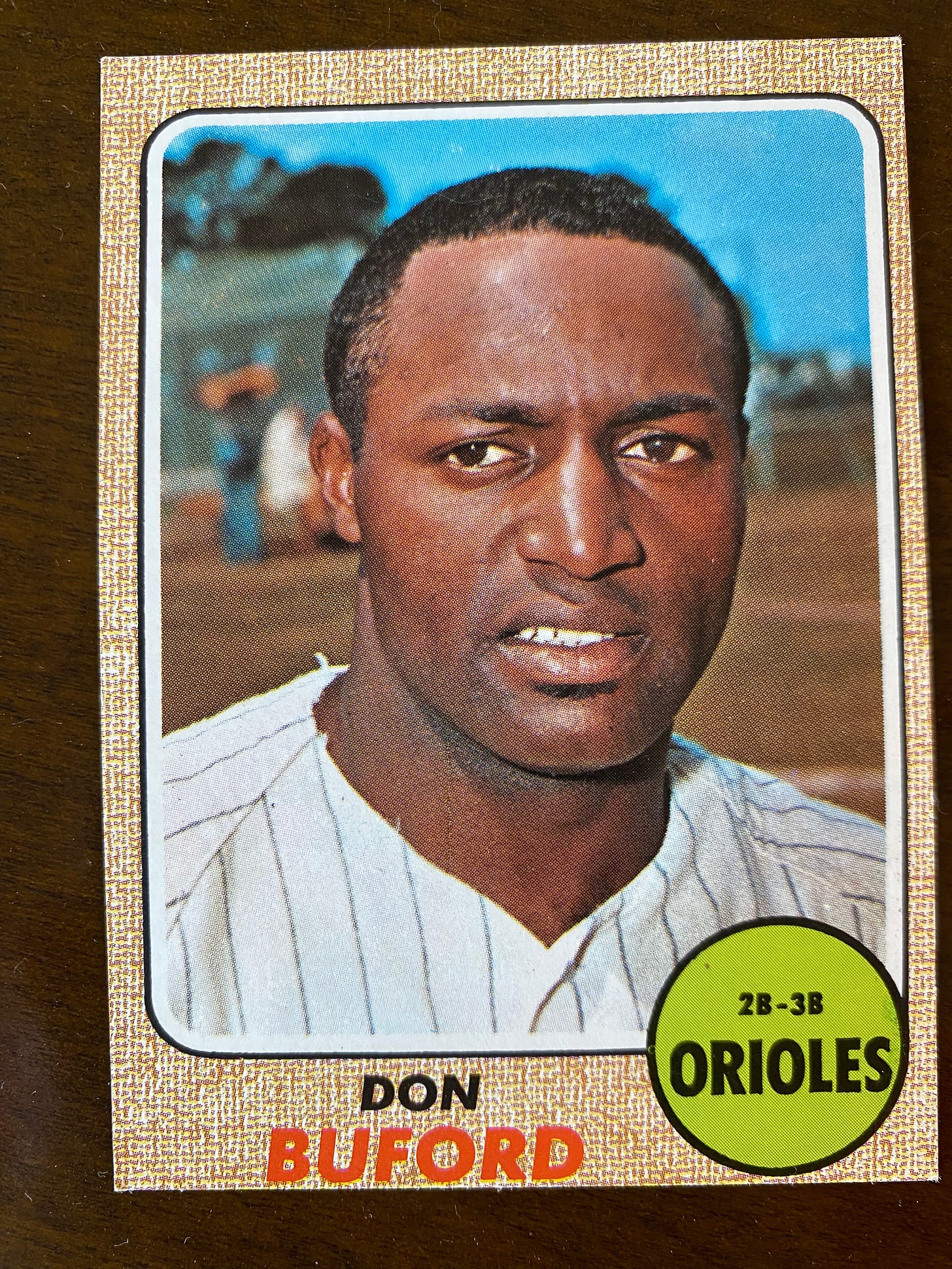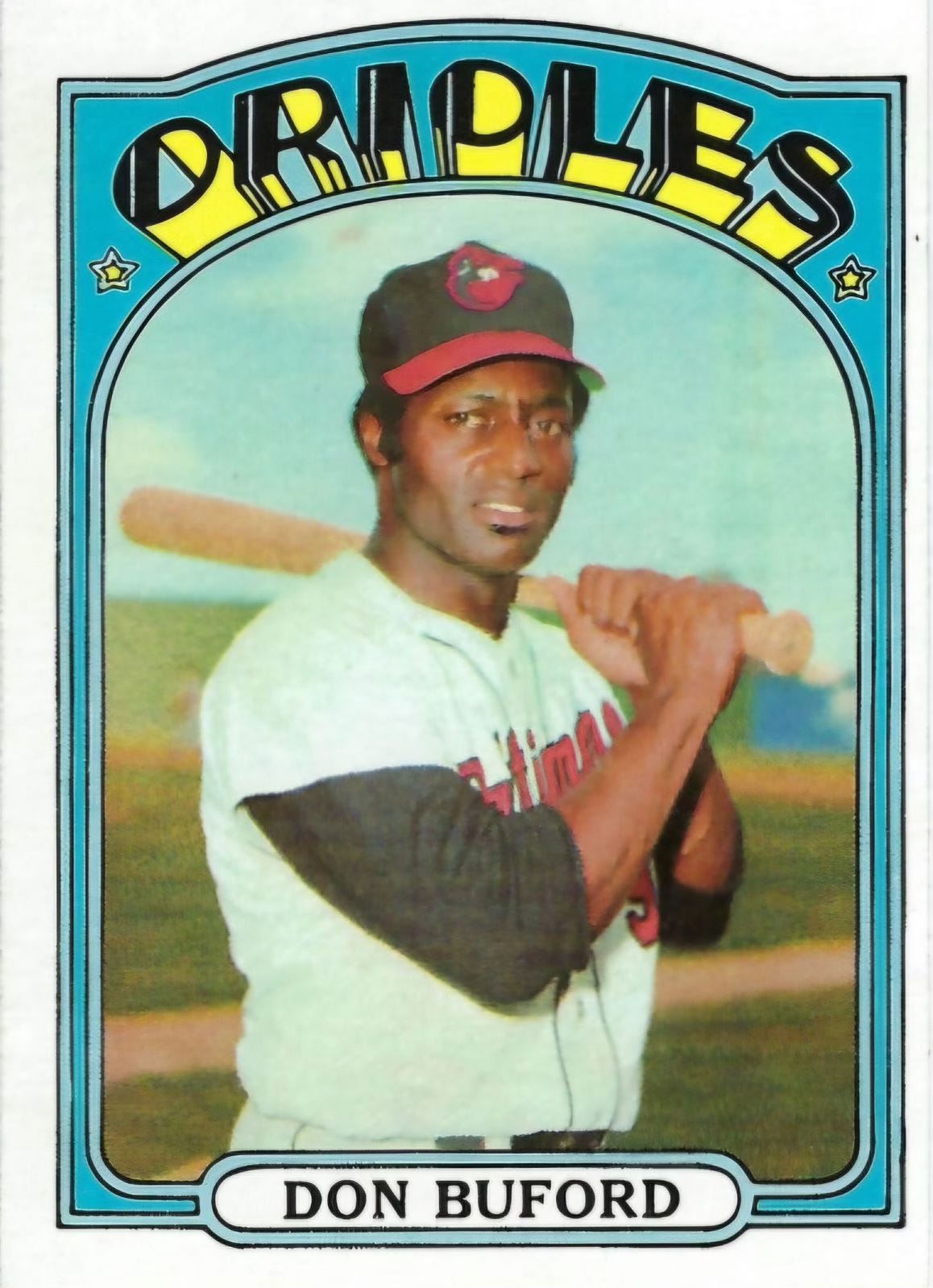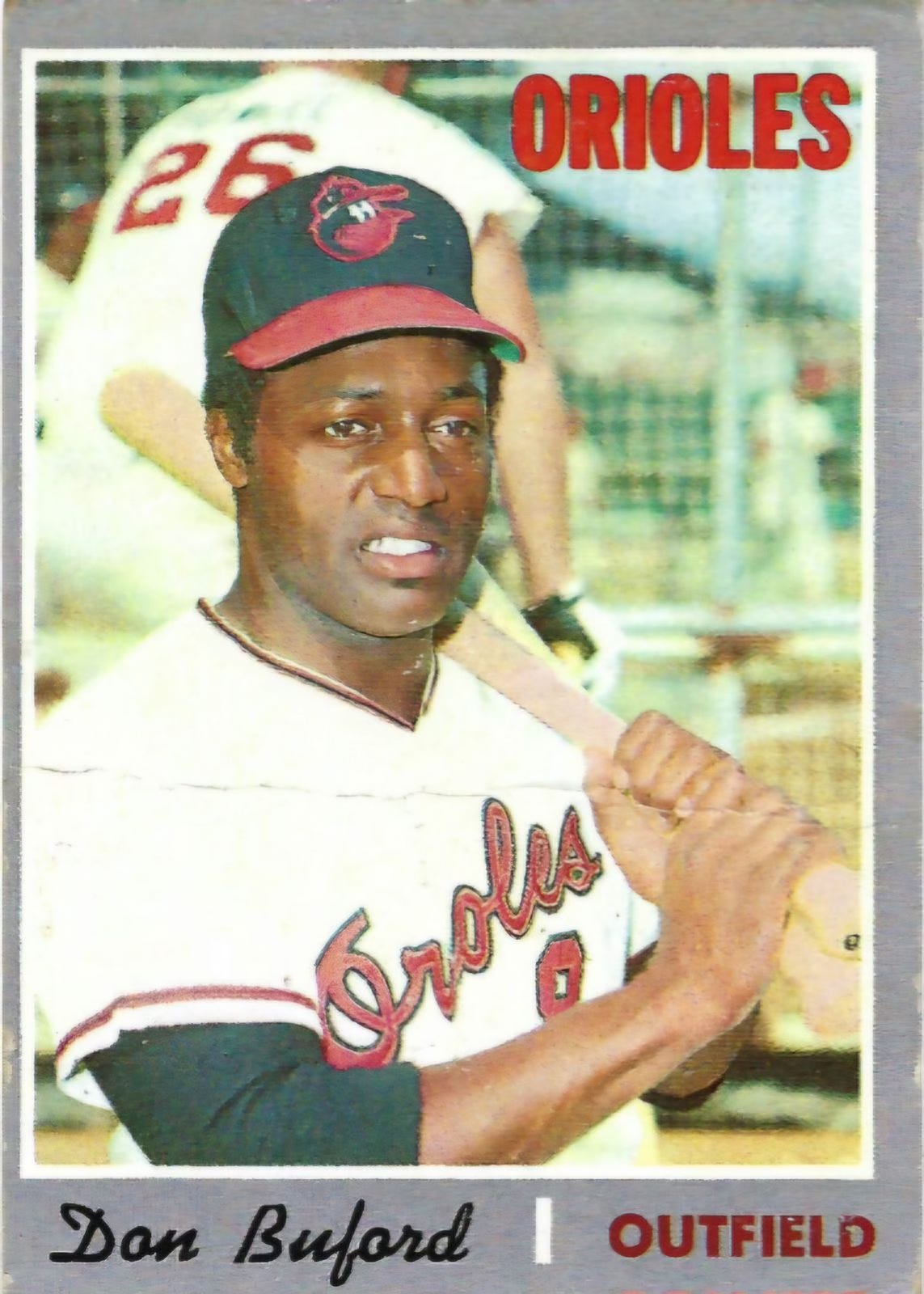The Bird Tapes Interview: Don Buford
The Orioles thought they were getting a utility infielder when they traded for him, but he wound up playing a much larger role when Baltimore ruled the American League.
A year after they swept the Los Angeles Dodgers in the World Series, the Orioles finished in sixth place in the American League in 1967, winning just 76 games. Then they went 43-37 before the All-Star break in 1968.
All told, they were 119-122 in the season and a half since their World Series triumph, a startling show of mediocrity considering their roster and lineup were only minimally altered. It was disappointing.
Seeking to reverse the trend at the All-Star break, Orioles GM Harry Dalton fired Hank Bauer, the manager who’d won the Series, and replaced him with 37-year-old Earl Weaver. There was an immediate and significant change in the team’s fortunes. Baltimore posted a .585 winning percentage over the second half of the 1968 season, then won 109, 108 and 101 games during the next three seasons.
Dalton’s switch from Bauer to Weaver deservedly received a lot of credit for helping reverse the downward arc that had consumed the Orioles for a year and a half. When I asked Weaver about it years later in an interview for my 2001 book on Orioles history, he didn’t mind taking that credit. The team that dominated the American League from the day he took over “was the same team, with two or three exceptions, that was 10 games out in July of 1968,” he said.
But Weaver also made sure he credited those “two or three exceptions,” players who were stuck in minor roles until he took over — Elrod Hendricks and Don Buford.
“They made the difference,” Weaver declared.
Under Bauer, Andy Etchebarren had been the No. 1 catcher, but Hendricks joined him in a platoon under Weaver, adding speed and power to the lineup.
Buford, acquired from the Chicago White Sox before the 1968 season, had been a reserve infielder under Bauer, only playing now and then. But Weaver, in one of his first strokes of creativity, put Buford in the outfield, replacing Curt Blefary, and stationed him at the top of the batting order. Buford became a key contributor, producing a .400 on-base percentage and scoring 297 runs from 1969 through 1971.
“Hank Bauer’s problem was he was so loyal to the guys who’d won in ‘66 for him, Blefary and Etchebarren,” Weaver said. “He went a year-and-a-half with those guys and they were doing nothing. Blefary wasn’t hitting, and he wasn’t a good player. Just the insertion of Buford and Hendricks made a heck of a difference.”
Years later, when I interviewed Buford for my book on Orioles history, he explained that it actually was his idea to switch to the outfield if it meant he’d play more. He was 31 at the time and regarded strictly as an infielder after six years with the White Sox, but he’d spent some time in the outfield as a college player, at Southern Cal, and also had occasionally manned the outfield during his long stint (five years) in the White Sox’s minor league system. (He was stuck behind Nellie Fox, the White Sox’s longtime second baseman and a future Hall of Fame inductee.)
As Buford explained in my interview with him in 1999, available below to paid Bird Tapes subscribers, he approached Weaver at the start off the 1968 season with the idea that he could move to the outfield, But Weaver was just a coach under Bauer at that point, and Bauer didn’t want to do it. Only when Weaver took command did Buford make the switch and become a key piece of the Orioles’ offense.
“My contribution,” Buford told me, “was a .400 on-base percentage. I could have had a lot more steals, but there was just so much lumber hitting behind me.”
When I re-listened to the interview recently, I was disappointed that it wasn’t longer. Buford had a fascinating backstory. He’d played football as well as baseball at Southern Cal, starring as a quarterback and halfback. I would have loved to ask him about that. He also had a hard time obtaining suitable housing in Baltimore after the Orioles acquired him — sadly, a struggle many of the Orioles’ Black players experienced in those years. I would have loved to get his thoughts about that.
But Buford was working for the Orioles as a minor league instructor when I interviewed him, and we spoke during spring training, an especially busy time. With a short window to conduct the interview. I wanted to make sure we covered the reason he belonged in my book — because he’d been such an important, if underrated, piece of the Orioles’ winning puzzle.
(Click on this link to upgrade to a paid subscription, which enables you to hear my interview with Buford and also gain access to my entire archive of vintage interviews with former Orioles. Buford’s interview makes it an even two dozen now posted in the archive, with many more to come.)
Keep reading with a 7-day free trial
Subscribe to The Bird Tapes to keep reading this post and get 7 days of free access to the full post archives.







